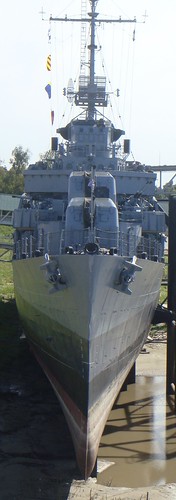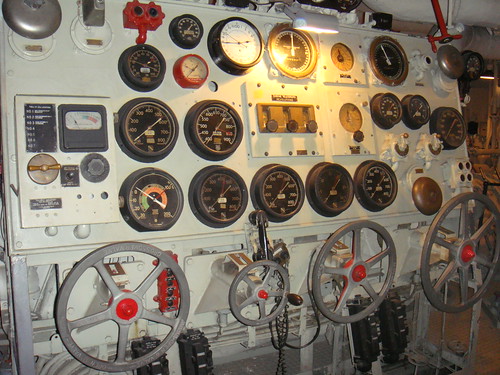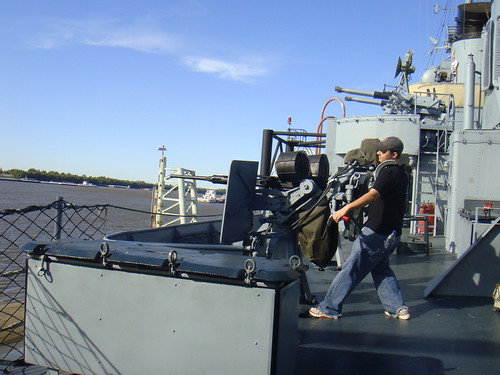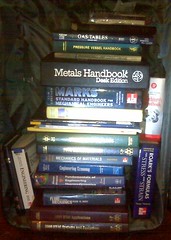
The day before the P.E. exam, I wanted to relax and not do any more studying. I drove to Baton Rouge, scouted out the exam site, and then entertained myself for the afternoon. I went to the Old State Capitol Museum, saw the gun that killed (?) Huey, and checked out the USS Kidd.
The Kidd is a Fletcher-class destroyer from WWII. It survived battles, a Kamikaze, post-war mass-scrappings of ships, age, and has been lovingly restored to it's WWII configuration. It has a unique anchorage that's a big part of why it's in such good condition. Half the year, the vessel floats, but it also rests during low tide on a set of blocks.

The ship dry-docks itself each year, which reduces corrosion and allows for easy maintenance of the hull. There are lots of museum ships that may soon end their lives because of corrosion (see the Olympia and the Texas).
The ship itself is an engineering marvel, which is one of the reasons why I wanted to go the day before the exam. It was built in 1942, but the ship is practically all powerplant (45-Megawatt) underneath the waterline, HUGE propellers has a top speed of 39 knots*. That's a ship that will really move! Part of the key is the "destroyer hullform":

A very narrow, tapered bow that slices through the water. It's not necessarily a great hull for heavy seas (see Typhoon Cobra), but when you want to go fast with reasonable fuel efficiency, accept no substitutes. It's a marvel of naval architecture.
I chatted with a USS Kidd veteran who was on duty at the museum for a while. I mentioned I had stayed on the Kidd when I was in scouts and I was an engineer and was taking the exam tomorrow and he said, "Oh, if you're an engineer, you'll want to see the engine room." JOY! He grabbed the key, and let me go down the ladder to the turbine room (the boiler rooms apparently are still sort of a wreck).

STEAM! VALVES! POWER!
As I left, I did have one sort of sad thought: there's a casino boat right next to the Kidd. How many more visitors does that ship get than the Kidd?
Full Flickr set here.

___________________
* 39 knots = 44.8 mph. There is some ambiguity about the exact top speed. The tour guide said 39 knots, the USS Kidd veteran said 39 knots, the USS Kidd website says 37 knots, Wikipedia lists 35-knots for the Fletcher class.


